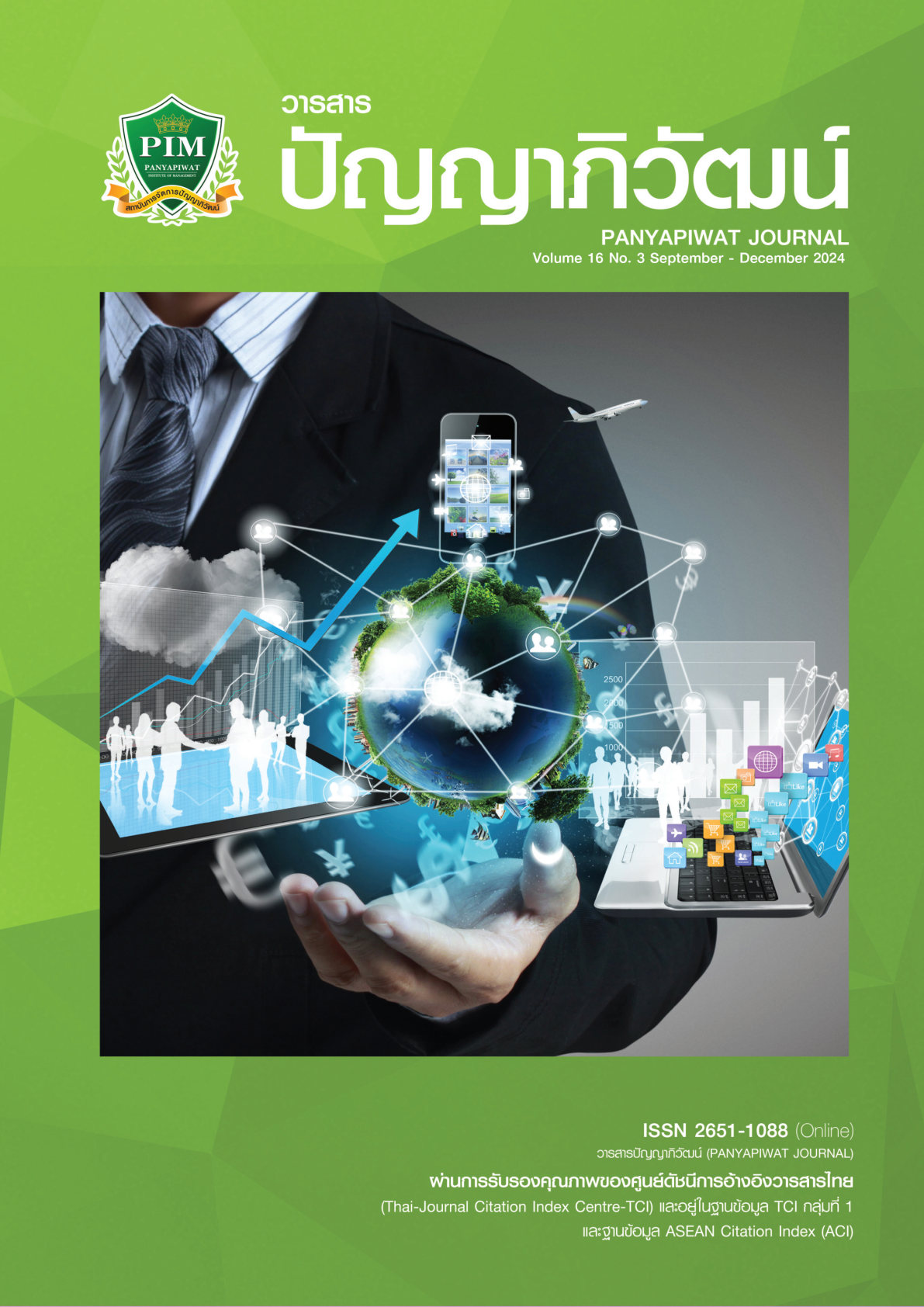DEVELOPING A LEARNING PROCESS MODEL OF THE ELDERLY TO BECOME SOCIAL ENTREPRENEURS
Main Article Content
Abstract
The study on developing a learning process model for the elderly to become social entrepreneurs aims to: 1) investigate the characteristics of elderly social entrepreneurs, 2) examine the factors and components of the learning process for elderly people to become social entrepreneurs, and 3) develop a learning process model for elderly people to become social entrepreneurs. Data was collected using a random sampling questionnaire with 400 respondents, who were elderly people from prototype self-reliant elderly schools. In-depth individual interviews were also conducted with 32 participants. Quantitative data was analyzed for frequency, percentage, mean, and standard deviation, while qualitative data was analyzed using content analysis. The findings revealed that: 1) the elderly had characteristics consistent with empowered elderly people and social entrepreneurs, including good health, financial security, social participation, management skills, confidence and financial stability; 2) the factors and components of the learning process were: 2.1) participation involvement in setting needs, implementation, responsibility and evaluation, 2.2) learning from experience, and 2.3) motivation desire for success and income; 3) the learning
process model consisted of: 3.1) input: elderly people with the characteristics identified in research question 1, 3.2) factors: factors and components identified in research question 2, 3.3) process: consisting of context analysis, learning process design, learning process development, learning management implementation, and expansion and adaptation, and 3.4) output: elderly people with the skills and expertise to become social entrepreneurs. Therefore, this model is called the “CLLLS MODEL”.
Article Details

This work is licensed under a Creative Commons Attribution-NonCommercial-NoDerivatives 4.0 International License.
I and co-author(s) certify that articles of this proposal had not yet been published and is not in the process of publication in journals or other published sources. I and co-author accept the rules of the manuscript consideration. Both agree that the editors have the right to consider and make recommendations to the appropriate source. With this rights offering articles that have been published to Panyapiwat Institute of Management. If there is a claim of copyright infringement on the part of the text or graphics that appear in the article. I and co-author(s) agree on sole responsibility.
References
Department of Elderly Affairs. (2017). Thai elderly power index. https://shorturl.asia/gB0hf
Honey, P., & Mumford, A. (1992). The manual of learning styles. Peter Honey Publications.
In-Teriya, M. (2017). Social capital. Nakkhabut Prarithat Journal, 9(2), 14-25.
King Mongkut’s University of Technology Thonburi. (2017). Teaching and learning management manual, project to develop teaching methods and extra-curricular activities in entrepreneurship. https://shorturl.asia/d34pI
Kongcharoen, M., & Boriboon, B. (2020). Research report on school model development elderly people using the community as a base. Srinakharinwirot University.
Mallikamarn, S. (2002). The constitution and public participation in its protection natural resources and the environment. https://shorturl.asia/Oic19
MGRonline. (2022). Loop! in the next 10 years, “bedridden patients” will increase: There will be more people who are single and do not have children, it recommended to introduce the policy “Income Guarantee”. https://n9.cl/rbr84
Noisommit, S., & Kantiya, C. (2019). Participation of the public sector in public policy. The Journal of Research and Academics, 2(1), 101-116.
Office of the National Economic and Social Development Council. (2022). 20 year national strategy. https://www.nesdc.go.th/nesdb_en/main.php?filename=index
Sukonpak, M., & Bunchuaythanasit, K. (2017). Conceptual health elements the energetic state of the elderly: A systematic review of the literature. BCNNON Health Science Research Journal, 11, 53-63.
Suwan, P., & Therawiwat, M. (2021). From “Phutta power” to “Phutta health condition”. Thai Journal of Health Education, 44(1), 12-29.
Wattanawong, S. (2004). Readiness for self-directed learning of continuing vocational education learners. Srinakharinwirot University.
Wongkeenee, W., Chintanawat, R., & Sucamvang, K. (2013). Factors predicting the power of urban population Chiang Mai Province. Thai Journal of Nursing, 40(4), 91-99.


